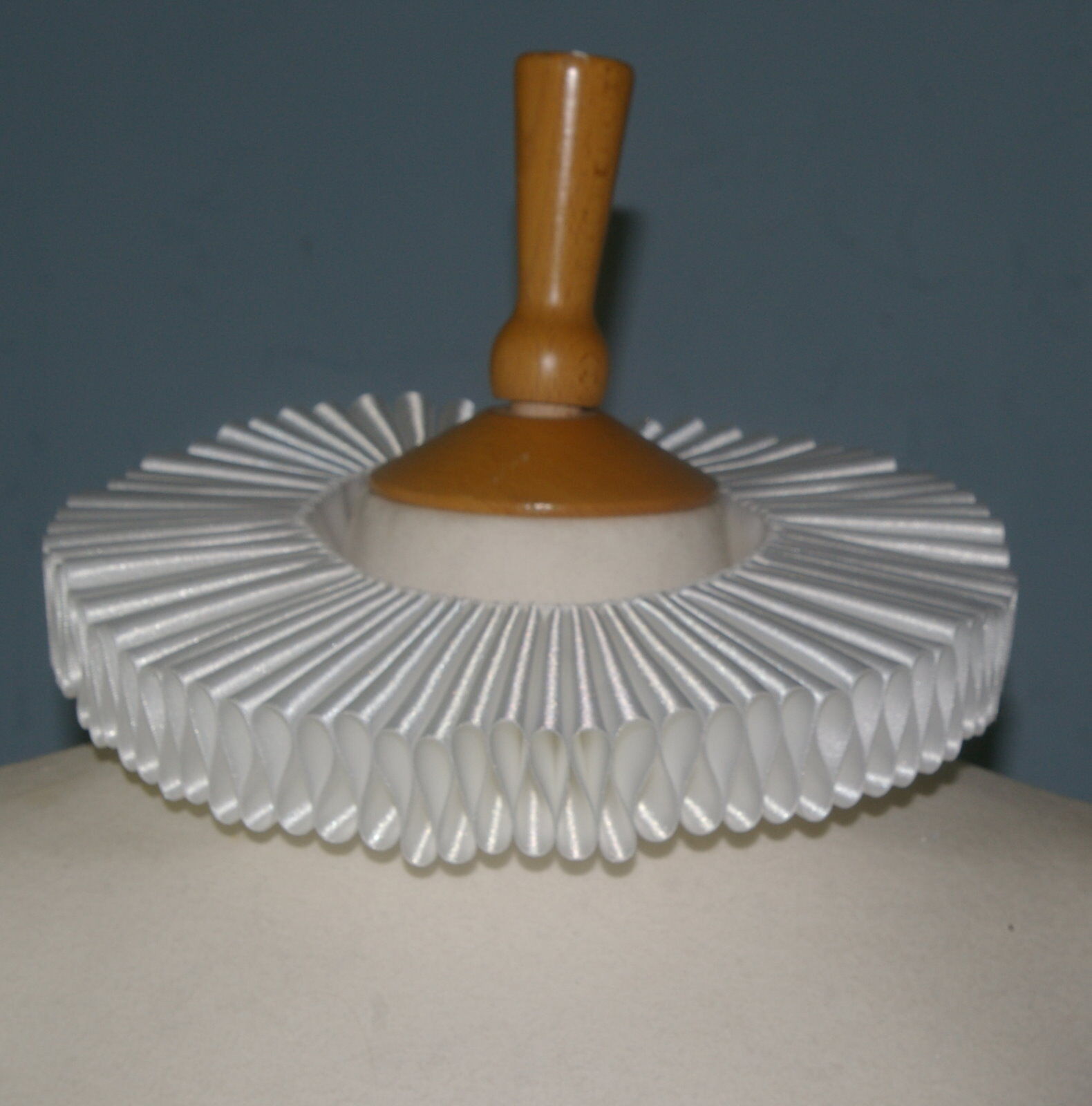 We have a replica ruff in our Tudor Handling Collection.
We have a replica ruff in our Tudor Handling Collection.
Ruffs were worn by women, men and children in Tudor times, and started out as a small ruffle of fabric at the top of a shirt that could be washed separately, and helped prevent gowns and other clothing getting stained and dirty. Over time, the size of ruffs increased, and this made them increasingly impractical. This led to them being associated with wealthy people. Starch was added to help hold the folds of the ruff in place.
While the most common colour for a ruff was white, ruffs were made in a variety of colours. A ruff with a blue tint was thought to make its wearer look paler, which was seen to be a positive thing at the time. Elizabeth I is said to have refused blue tinted ruffs to be worn by any of her subjects, since blue was the colour of the Scottish flag.
While ruffs went out of fashion in the seventeenth century, some church ministers and choirs still include the ruff in their uniforms.